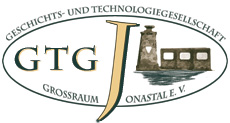Offener Brief an Rainer Karlsch – GERMANY WOULD HAVE TEST OF CHARGES FOR A-BOMB… – vom 17.09.2005
Brief der Professoren Mineev und Funitkov an Herrn Karlsch zum Thema Deutsche Atombombe
Veröffentlichung am 17.09.05 mit freundlicher Genehmigung von Herrn Karlsch
GERMANY WOULD HAVE TEST OF CHARGES FOR A-BOMB WITH D-T BOOSTER AT THE END OF WORLD WAR II
The book “Hitlers Bombe, Die geheime Geschichte der deutschen Kernwaffenversuche” ( DVA, Munchen,April, 2005) by Rainer Karlsch brought about a heated debate in scientific circles. We became interested in the article “New light on Hitler’s bomb” by R. Karlsch and M.Walker published in Physics World in June of 2005, which, specifically, contains some information about explosion devices tests at the end of the Second World War.
>From our viewpoint, the events that could have led to the development of such devices are as follows:
1. September 1939 – the start of the German project of the A-bomb, first in world.
2. G. Guderley, a German physicist-theorist, published in 1942 an article considering an opportunity of cumulation of energy in shock wave convergence in the spherically symmetric case. Later, this phenomenon provided grounds for the development of “imploding implosion” or “implosia”. Implosia allowed physicists to achieve high density and temperature of the substance exposed to shock wave. The principle of implosia formed a basis for atomic and thermonuclear weapons.
3. Following the US, Germany scientists designes of cumulative charges for light anti-tank grenade launcher type “Ofenrohr” and started production it. In 1930th, the research was started by professor Schardin. During the war, professor Erich Schumann – the director of the Germany army`s weapons-research department – was leader this work. In explosive charges for this weapon principle of implosia was used by means of “hollow-charge” technique. Understanding of how cumulative “Ofenrohr” worked led Erich Schumann to an idea of using cumulative explosive charge for realization in theirs focus hi gh density and temperature.
The use of spherical charge from explosive detonated at several points on outer surface simultaneously and hollow filled with deuterium, as Schumann held, would lead to initiation of thermonuclear reaction in deuterium. In late 1950th, USSR conducted an analogous research but also finally failed (Kozyrev).
4. Germany had a greater amount of natural uranium and its industry had a technology of its processing. Germany has manufacture of high explosive castable mixture hexotol This materials are base materials for atomic device and this materials were tested in combat cumulative charges for light anti-tank grenade launchers.
5 Germany had a technology of making heavy water and could be able to start laboratory production of deuterium required for carrying out explosion tests for initiation of thermonuclear reaction. So, simple scheme tested in Germany would be spherical charge from explosive detonated at several points on outer surface simultaneously. Hollow of this charge was filled core or levitated composite cores from uranium with deuterium. Under explosion uranium are crushed, burnt and flown. In our observation in case condition combustion of uranium generate a bright flash and fire. Size of uranium dispersion zone is 10-20 m for explosive charge with 150 kg mass and 30 kg uranium mass. What is why this device was no “dirty bombs” out of small radiological and chemical attack zone. In conclusion, we would like to note that the German atomic project is impression by its deep understanding of nuclear chain and shock waves history under implosia. For example, it was assumed that nuclear chain will be initiated by means of fast neutron generated by high –voltage discharge tube, situated out of explosive charge.
USSR developed an analogous device only in 1954.
Alvin M.Weinberg et al., American scientists, were absolutely correct in concluding that German specialists had a deep understanding of nuclear arms regardless of properties of 235U and 239X94, which later on were called plutonium.
Vladimir Mineev, Alexander Funtikov,
Professors of Institute for High Temperatures Russian Academy of Sciences,
designers explosive device for Soviet nuclear weapons at 1995-1976 years
